Where Have All The Butterflies Gone?
16:04 minutes
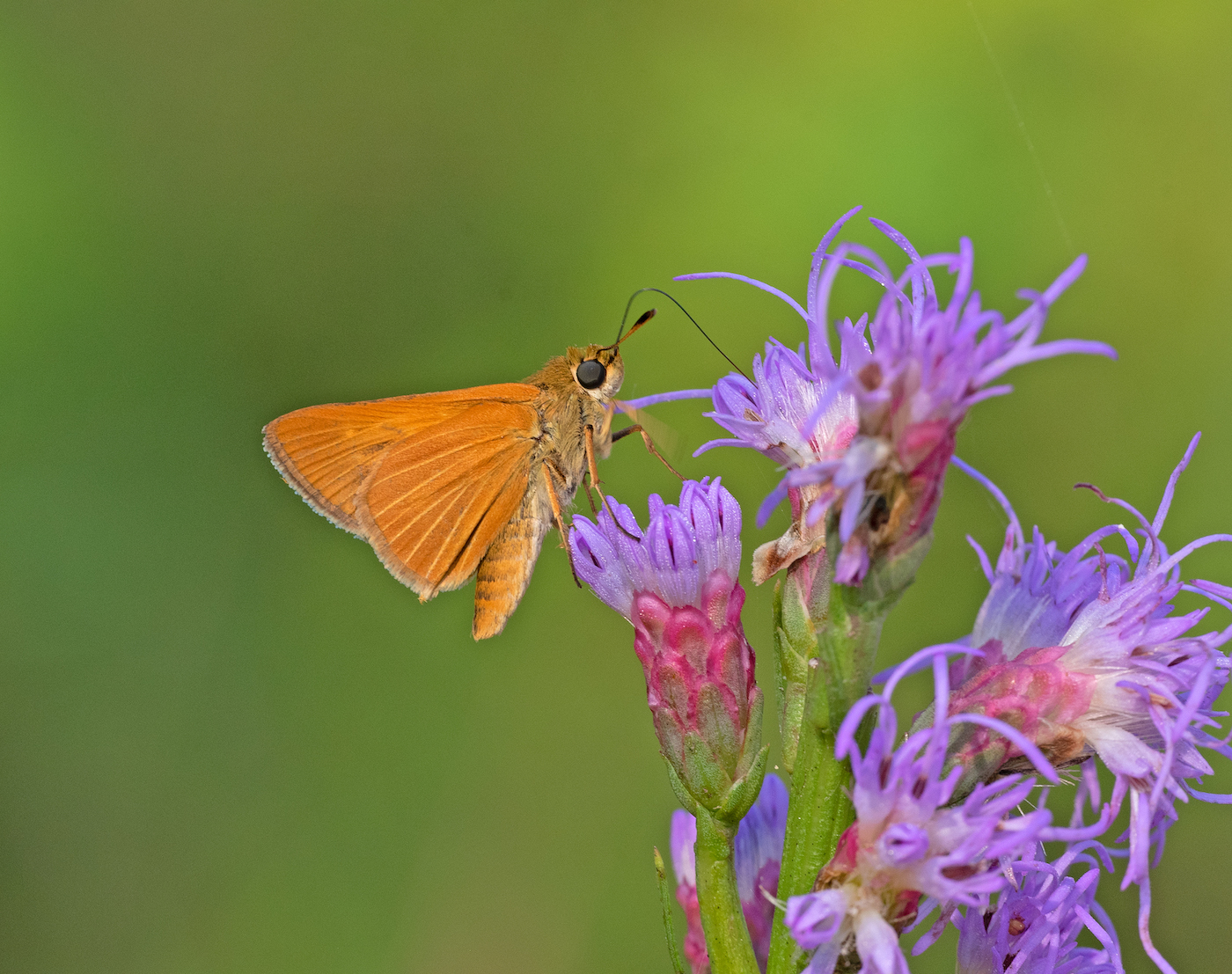
A sweeping new study on one of the most beloved insects, maybe the only truly beloved insect—the butterfly—details its rapid population decline in the United States. The new research, published in the journal Science widens the butterfly net and looks at how more than 500 species have fared over the past 20 years.
Researchers found that many populations are taking a nosedive. What’s causing the downswing, and is there anything we can do?
Host Flora Lichtman talks with two of the study authors, Dr. Elise Zipkin, Red Cedar distinguished professor of quantitative ecology and director of the ecology, evolution and behavior program at Michigan State University; and Dr. Nick Haddad, professor of integrative biology also at Michigan State University in East Lansing, Michigan.
We asked our listeners to share their favorite butterfly memories and photos with us, and got an outpouring of responses! Here are a few of our favorites.
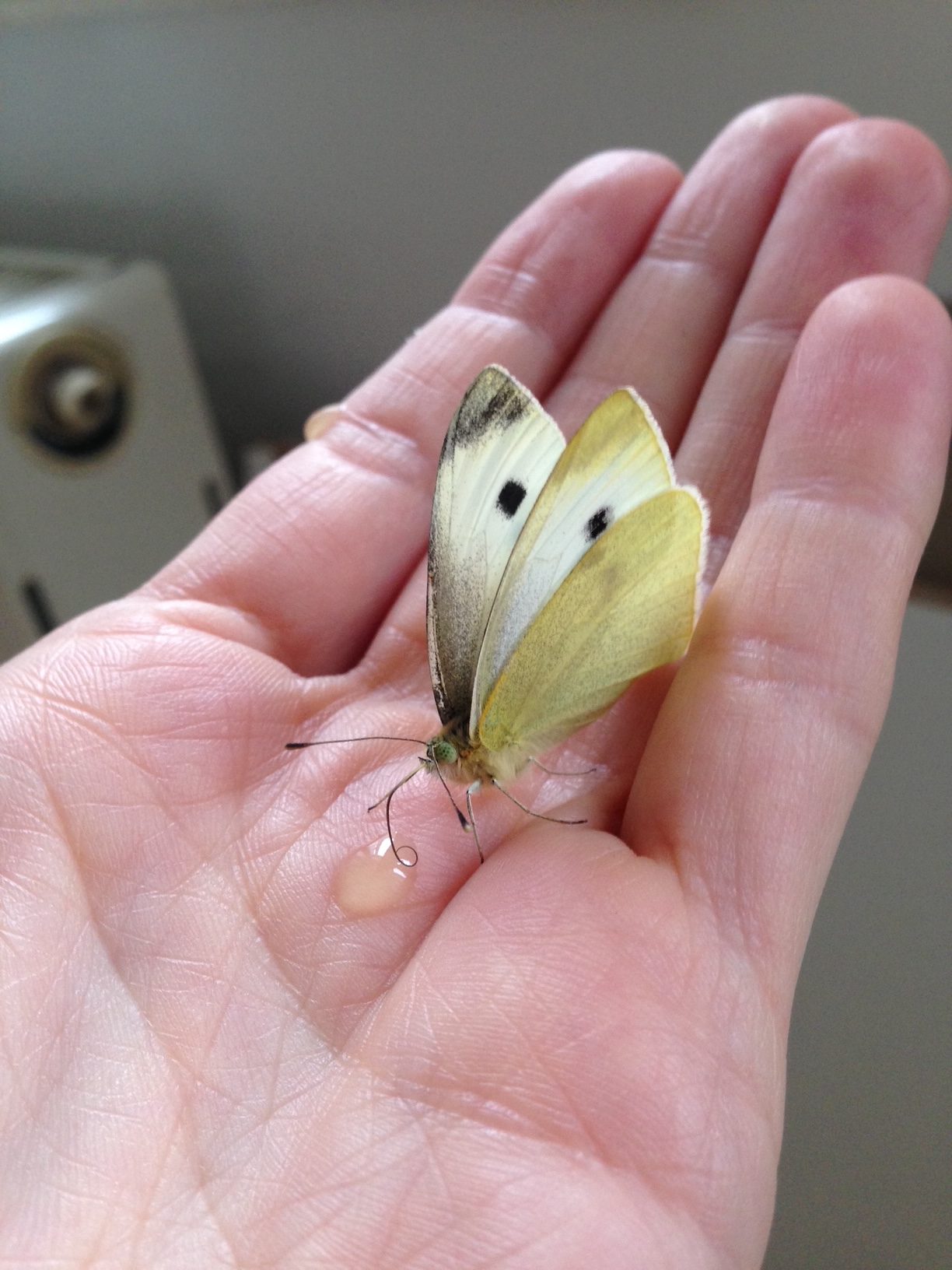 For about two weeks in February of 2014, I had a butterfly live with me in my flat in Prague, Europe. It just appeared … It literally just lived with me and my dog in this tiny flat and I fed it sugar water, and for about two weeks I had the most magical roommate that I could have.
For about two weeks in February of 2014, I had a butterfly live with me in my flat in Prague, Europe. It just appeared … It literally just lived with me and my dog in this tiny flat and I fed it sugar water, and for about two weeks I had the most magical roommate that I could have.
—Hana, Thousand Oaks, CA
 [In 1981] I had a brand new Nikon camera—the first really good camera I owned. I wandered into our backyard where this lovely male swallowtail butterfly landed on a lily right in front of me. My first picture!
[In 1981] I had a brand new Nikon camera—the first really good camera I owned. I wandered into our backyard where this lovely male swallowtail butterfly landed on a lily right in front of me. My first picture!
—Anonymous, Los Alamos, NM
 I’ve just never had such a cooperative butterfly as a subject before. It was an unusually warm day, I was in my garden (Leicester, UK, but I’m originally from Alabama) and it was kind enough to wait for me to get my phone out. I’d never seen one in real life before.
I’ve just never had such a cooperative butterfly as a subject before. It was an unusually warm day, I was in my garden (Leicester, UK, but I’m originally from Alabama) and it was kind enough to wait for me to get my phone out. I’d never seen one in real life before.
—Rick, Leicester, UK
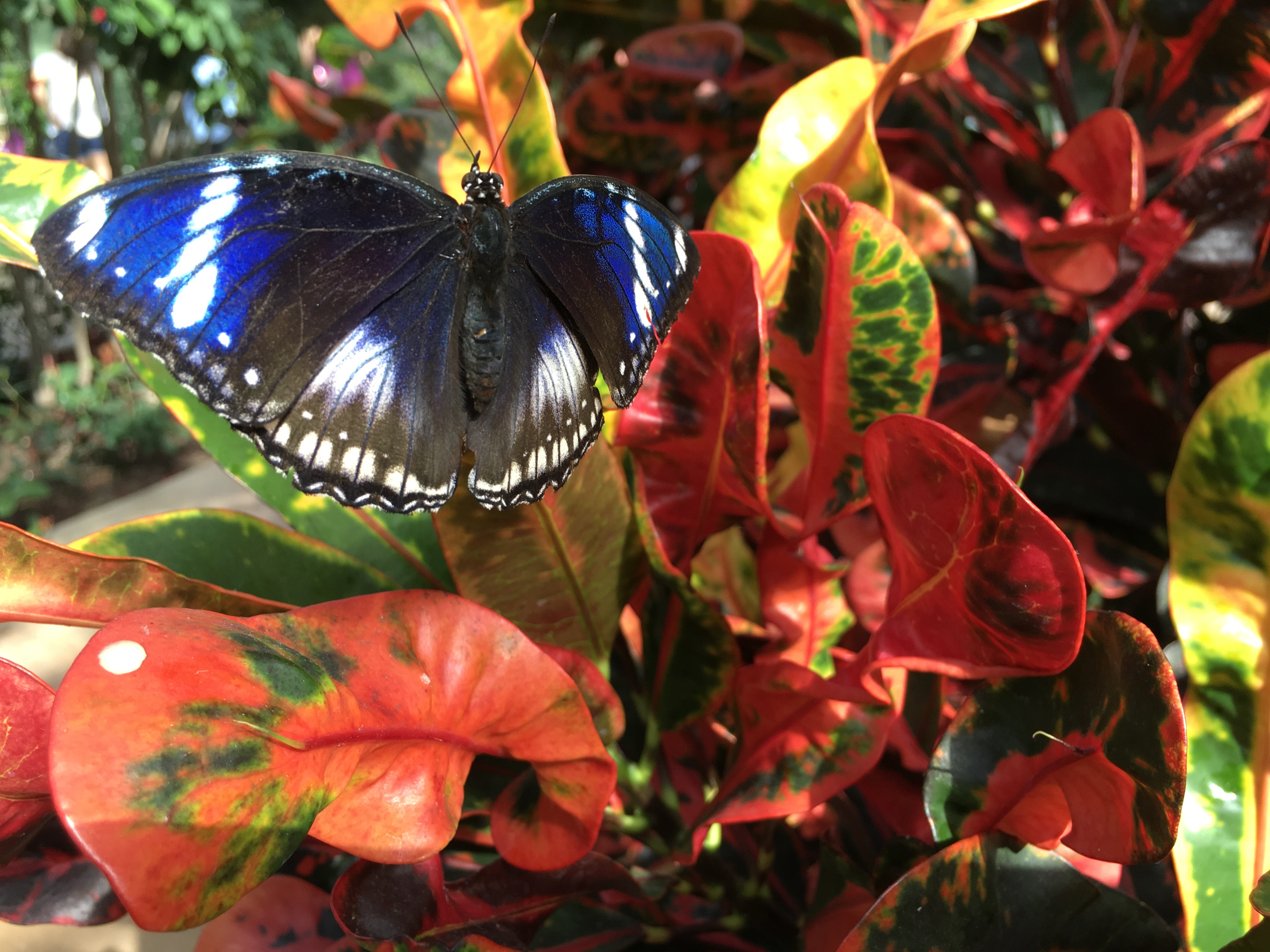 The photo was taken on March 8, 2018 in Scottsdale, Arizona, at Butterfly Wonderland while visiting a dear friend of ours … I am a nature enthusiast and couldn’t resist seeing butterflies I might never see in the real world. I was particularly happy to see so many butterflies land [on] our friend. It was a magical experience.
The photo was taken on March 8, 2018 in Scottsdale, Arizona, at Butterfly Wonderland while visiting a dear friend of ours … I am a nature enthusiast and couldn’t resist seeing butterflies I might never see in the real world. I was particularly happy to see so many butterflies land [on] our friend. It was a magical experience.
—Sharon, Port Charlotte, FL
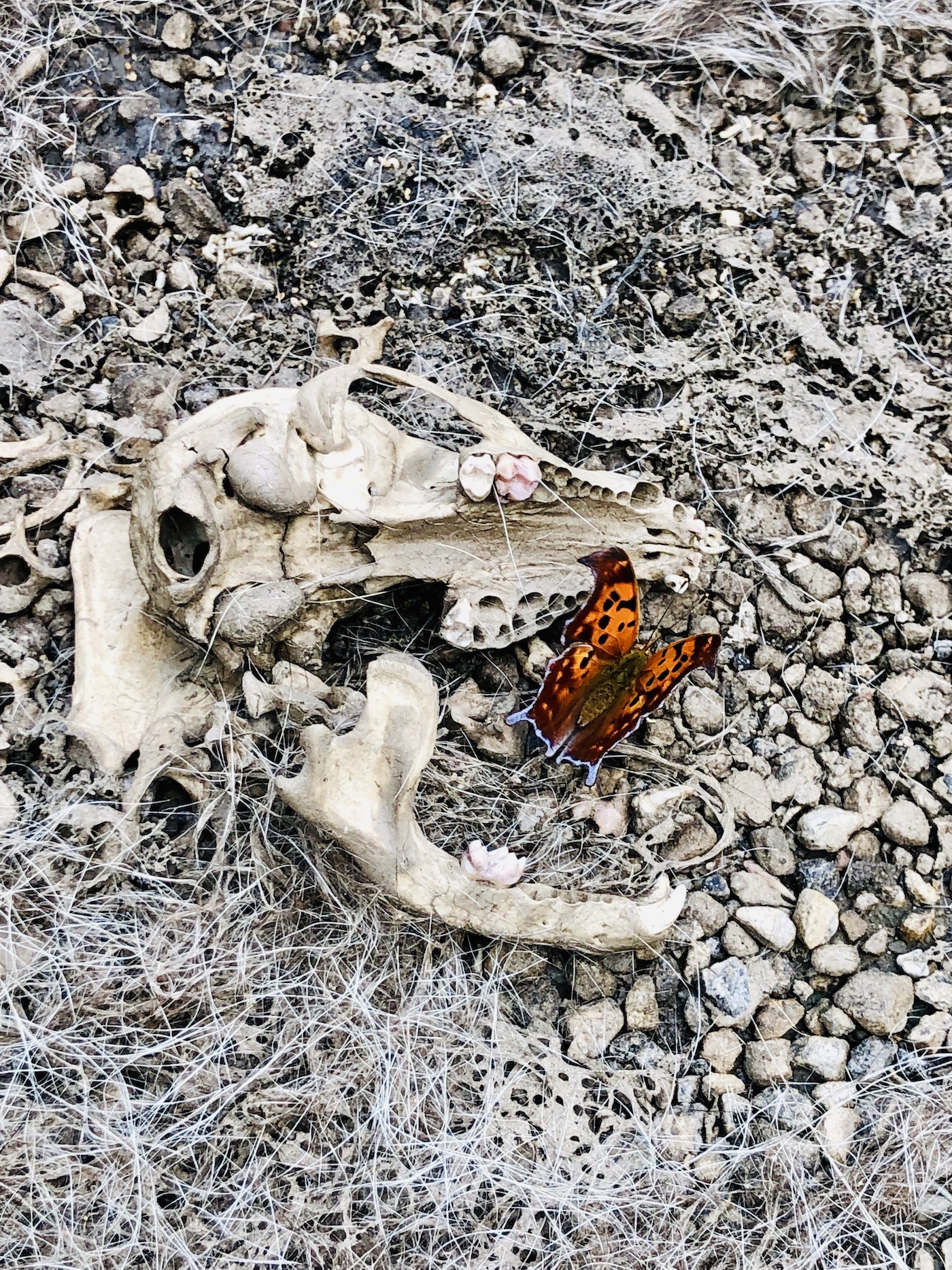 This was taken a few years ago during the springtime at Riverside Park in Springfield, IL. I thought the skull and the butterfly [were] beautiful representations of the cycle of life—death and rebirth.
This was taken a few years ago during the springtime at Riverside Park in Springfield, IL. I thought the skull and the butterfly [were] beautiful representations of the cycle of life—death and rebirth.
—Jessica, St. Louis, MO
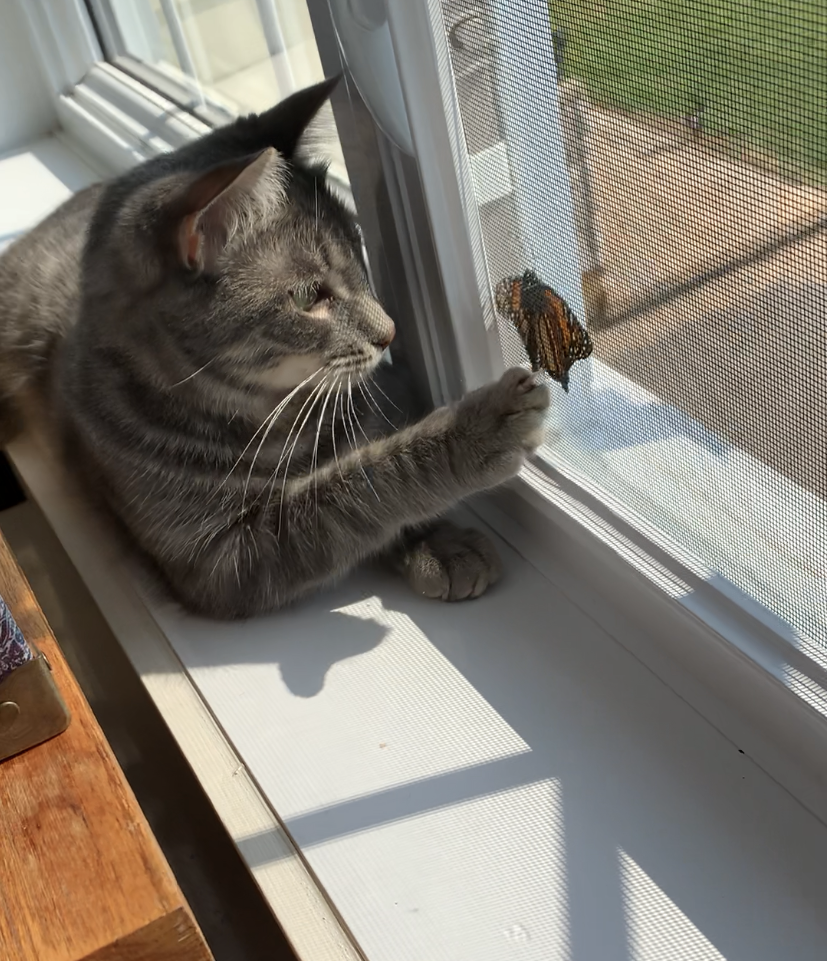 [This] was taken from home while our cat LouLou was enjoying the view and sunshine in front of the open window. A butterfly just came and leaned on the screen and LouLou just put her paw on the screen to touch it. It lasted for a moment, both eyeing each other. Had to take the picture. LouLou is no longer with us but she was dearly loved by us for [a] number of years.
[This] was taken from home while our cat LouLou was enjoying the view and sunshine in front of the open window. A butterfly just came and leaned on the screen and LouLou just put her paw on the screen to touch it. It lasted for a moment, both eyeing each other. Had to take the picture. LouLou is no longer with us but she was dearly loved by us for [a] number of years.
—Francine, Quebec
 This is the day we spread my father-in-law’s ashes at a lake in Northern BC. Our family had taken a moment to talk about Dad and while we did, this butterfly showed up and landed on his great-granddaughter’s hand. This is a photo of great-grandma and great-granddaughter having a moment with the butterfly. The butterfly flew to each person in the group for “comfort.” When someone said “if this is really you, then check out the boat” the butterfly then flew into the boat to look around. It was magical.
This is the day we spread my father-in-law’s ashes at a lake in Northern BC. Our family had taken a moment to talk about Dad and while we did, this butterfly showed up and landed on his great-granddaughter’s hand. This is a photo of great-grandma and great-granddaughter having a moment with the butterfly. The butterfly flew to each person in the group for “comfort.” When someone said “if this is really you, then check out the boat” the butterfly then flew into the boat to look around. It was magical.
—Shane, British Columbia
We love it when our listeners ask us questions about science. Be the first to hear about our upcoming stories, and submit questions for our experts!
Invest in quality science journalism by making a donation to Science Friday.
Dr. Elise Zipkin is the Red Cedar Distinguished Professor of Quantitative Ecology and director of the Ecology, Evolution and Behavior Program at Michigan State University in East Lansing, Michigan.
Dr. Nick Haddad is a professor of Integrative Biology at Michigan State University in East Lansing, Michigan.
FLORA LICHTMAN: This is Science Friday. I’m Flora Lichtman. A new sweeping study on one of the most beloved insects, maybe the only truly beloved insect, the butterfly– you’ve heard about Monarch declines. But new research in the Journal Science widens the butterfly net and checks in on over 500 species. And the researchers found that many populations are taking a nosedive.
So what’s causing the downswing? And is there anything to do? Joining me now to explain are two of the study authors. Elise Zipkin is the Red Cedar Distinguished Professor of quantitative ecology and director of the Ecology, Evolution, and Behavior Program at Michigan State University. And Nick Haddad is a professor of integrative biology, also at Michigan State University, in East Lansing, Michigan. Welcome to you both to Science Friday.
NICK HADDAD: Thanks for having us.
FLORA LICHTMAN: OK, top level, what did you find?
ELISE ZIPKIN: So we aggregated all the data that were available across the United States, which was 35 different monitoring programs that collect information about butterflies. And we put that into a general model to look at, how are butterflies doing overall? And which species are doing better and worse?
And what we found in our big grand model was that 22% of individuals had declined since the year 2000. So what that means is, if there were five individual butterflies in the year 2000, there were only four in the year 2020. We also found that there was about 13 times more species declining than increasing. And only 9 of the species across the 342 species that we were able to do individual species level analyses for were increasing. So this kind of paints the most complete picture that we have so far about the status of butterflies in the continental United States.
FLORA LICHTMAN: How did you react to this finding?
NICK HADDAD: It’s distressing and saddening. To see butterflies declining like this is, yeah, it’s just tragic. And the problem is that first, we see decline over the last 20 years. We don’t see an end in sight. The trend is still downward.
FLORA LICHTMAN: Elise?
ELISE ZIPKIN: Yeah, I would agree. I mean, insects are ubiquitous. And people don’t think about it, but they provide so many services to people and to ecosystems. So they’re really important for pollination, for crop production. They serve as a resource for food for all other kinds of animals, including birds.
And we don’t have a lot of data on many insect species, but we do have a lot of data on butterflies in particular, because people love them. The data we’re collected primarily by volunteer scientists who participate in programs and go out on their free time, walking different areas around their house and in natural areas and recording the number of individuals that they see. And so because people love butterflies and are willing to do this, we’re able to get a more complete picture about what’s going on with butterflies compared to many, many other insect groups.
FLORA LICHTMAN: Because it would be hard to do this with, like, a beetle.
ELISE ZIPKIN: Right. First, you would have to do a different kind of data collection with a beetle. You wouldn’t be able to just walk outside and see them. But also, because people just aren’t going to do that. So it’s nice that because butterflies are so beloved, we have this amazing resource. And this is giving us the most complete picture of any insect group that’s around. So I think it’s also a little bit of a warning sign to what might be going on with other insect groups.
FLORA LICHTMAN: So this data all came from regular folks who are just butterfly gazers and entered their observations into a spreadsheet somewhere?
NICK HADDAD: Yeah, mainly. These were data that came from thousands of people and tens of thousands of surveys over two decades, to the point where we could get, what, 12.5 million observations of butterflies that went in–
FLORA LICHTMAN: 12.5 million?
NICK HADDAD: 12.5 million. And–
FLORA LICHTMAN: Wow.
NICK HADDAD: –like you said, I mean, you can’t do this for other insects. I mean, that’s the cool thing about this study. Butterflies, Elise and I could go out this afternoon and count the butterflies on one of these paths, and then we’d have our data ready to go in analysis. If Elise and I went to look for other pollinators, like bees, we could sweep up enough that would keep my lab busy for the winter trying to identify them. And so you just can’t do that.
FLORA LICHTMAN: Well, maybe we need to build interest in other insects. Maybe butterflies are the gateway insect.
ELISE ZIPKIN: Yeah, I mean, I think that’s a really good idea. There’s a lot that people are thinking about it for participatory science programs. But also, I would argue, even with the butterflies, so there were 554 species observed in our data. But we only had enough data to do an analysis at the species level for 342 species. And so we actually could use even more people, more volunteers, collecting those butterfly data.
So, for example, one of the longest running programs is in Illinois. They’ve been collecting data since 1987. And there are people there, individuals who walk these same transects. So transects align, basically, through a meadow or some natural area, usually near their house. People do that every single week during the spring and summer for year after year.
And those kinds of information, those kinds of data, are invaluable to us. It’s not like there are enough scientists to collect that kind of information. So these kinds of synthesis studies just rely so much on the data that volunteers are collecting.
NICK HADDAD: Going back to your question about the gateway, I like to think of butterflies as the new birds. I mean, there’s 70 million people that watch birds by having feeders in their backyards. And now we’re seeing that butterflies can serve as the same role. People love butterflies, and they can very quickly develop the ability to identify them and take data on them.
Can they be the gateway? Well, I’d hope so. I think the next types of insects that people could get involved with collecting data on are bees, and especially the bigger bees, like honeybees and bumblebees. It gets harder beyond that. Many bees are tiny, hard to see.
But butterflies are declining. And we have no reason to believe that butterflies aren’t good indicators for what’s happening to the rest of the insect world. And so we need to know more, not just about butterflies, but how they relate to the great diversity of life that is insects that we think are declining as well.
FLORA LICHTMAN: Yeah, well, we’ve heard about this insect apocalypse, of course. What is causing the decline in butterflies? Do we know?
ELISE ZIPKIN: So there’s three big categories that we think about with insect declines. So that would be climate change, habitat loss, and then pesticide or insecticide use. And Nick worked on a study recently that compared those in Ohio. Nick, do you want to jump in?
NICK HADDAD: Yeah. It’s been difficult to parse out which is the most important factor. And so we compare apples to apples by getting all the data on land use and climate and insecticides and pesticides in the US Midwest, so Ohio, Michigan, Illinois, and other nearby states. And what rose to the top as causing decline is insecticides. And so I really do think that insecticides are in our sights to change usage to try to reverse this pattern that we’re seeing with butterflies. And trying to switch to a more positive note–
FLORA LICHTMAN: Good luck.
NICK HADDAD: Yeah, I know. Good luck. But we can make changes. Just to give a sense for this, in the US Midwest, there’s 100 million acres where we grow corn and soy. And every seed of corn that’s planted has a coating of pesticides, including these insecticides. So we’re saturating our environment every year with insecticides.
And that’s true even if there’s no pest problem. So it’s a real problem. And in fact, some researchers, including on our study, show that insecticides don’t benefit corn yield. And so here we are putting massive doses of insecticides out and yet to no benefit, but, in fact a cost to having to put the insecticides out. We’re not saying end use of all insecticides. We’re saying be more measured, and reduce the use dramatically, and hopefully, benefit butterflies and the rest of insects.
FLORA LICHTMAN: We’re talking about big systemic changes. Is there anything meaningful that an individual person can do? We hear a lot about milkweed. But is that meaningful? Is that meaningful for the Monarch populations, or are there other things we can do?
ELISE ZIPKIN: Yes, I think there’s a lot we can do. One thing you can always do is plant local species. I mean, planting milkweed is great, local milkweed species for Monarchs. But there’s actually evidence that Monarchs and other species do better when there’s more mixed species being planted. So the key to this is that you want to look up what’s native in your area.
There’s ways that we can work beyond that with other local people. So for example, my dad, he lives in Cincinnati, Ohio, and he worked with a local park and brought in different groups. And they set up area where they restored a tiny prairie and a butterfly garden. The idea of thinking about restoring areas– and it doesn’t have to be huge areas. They can make a difference. Butterflies move around, so they can find these areas. And that can have a big effect.
FLORA LICHTMAN: When we think about how butterfly populations might rebound, is it an advantage that they have short lifespans?
ELISE ZIPKIN: Yes, absolutely. So one of the cool things is that insects, unlike vertebrate species, with the backbones, insects, they rely so much on weather cues and habitat cues of what’s going on right now. So, they produce a lot of individuals, a lot of eggs. And those can all either survive or die or somewhere in between.
So in a really good year, we can get off a lot of individuals. So what’s amazing is the butterflies have a potential to recover in a way that you couldn’t see with something like mammals, where they produce their young and take really good care of them for a long time, but they’re limited on how many they can produce. So yeah, I mean, that’s one thing that’s kind of exciting about this work, is things can really change around. It’s not like we are on a doom and gloom cycle, and this has to go this way. There is a lot of hope for things to change.
FLORA LICHTMAN: Did you find any populations that actually went up in your study?
NICK HADDAD: So there were nine specifically that have high rates of population growth. And one group of species that I’ve noticed are increasing feed on grasses. And so these are a group of small brown and orange butterflies. They’re called the skippers. Some of those butterflies feed on grasses that are planted in people’s lawns or on roadsides. And they seem to be doing quite well.
For some of the species, there’s good reason for that. We’re planting the food that the caterpillars eat. For others, even if they’re feeding on native grasses, they’re also increasing. And so it’s something that we want to investigate in the future. Why are some species doing so well?
FLORA LICHTMAN: Yeah, that’s fascinating. This is a question that comes from Moth Nation. What about moths?
NICK HADDAD: So first, there’s 10 to 20 times more species of moths than butterflies. The best evidence we have, and it’s much more limited for moths and other insects, is that they’re declining at about the same rate of butterflies. But the way I think about moths is, like you asked earlier, if butterflies are the gateway to other insects, well, moths is high up on the list of some of species that we could know more about, and we meaning any of us contributing to the data needed.
And how people that are scientists are just trying to get an insects look at them is they put a white sheet up in the nighttime and put a black light on the sheet that attracts moths. And so then the moths are sitting on the sheet. And you can see this great diversity of life.
And the problem is that moths are very hard to identify. But I’ve seen cases in England and in the Netherlands where there are– I’ll say fewer species. But nonetheless, they put a black light and a camera and use AI to identify two species, all the moths, and then gather data on their abundance. So I see the future of studying moths as right at the forefront because we can take advantage of new coding technologies to identify and count the species.
FLORA LICHTMAN: They’re difficult to identify. I’m hearing that as a challenge.
ELISE ZIPKIN: Yeah, the exciting thing, I should say, is that there are new opportunities to do those kinds of identifications. Before, we would have teams of scientists or undergrads working on that in the lab and trying to identify everything which would be, as Nick said, would keep his lab busy all summer. And so now with new technologies, there’s this ability to do those things more quickly and potentially, learn a lot more about groups of species faster.
FLORA LICHTMAN: Elise, any last words? Yeah,
ELISE ZIPKIN: I do have a last words.
[LAUGHTER]
NICK HADDAD: A lot of them.
[INTERPOSING VOICES]
ELISE ZIPKIN: I have a lot of, yeah. So I think this research can sometimes bring you down because we’re seeing a lot of loss of biodiversity, loss of butterflies, which are a group of species that people love. But as I move through this, I’m always hopeful. Because I think that there’s a lot of opportunities to reverse these trends.
I think we’re still at this point where we can really protect biodiversity. And we can do that individually. We need to do that also with the support of our governments making policies. But there is really a lot that can be done. And I think it’s upon us to think about that.
FLORA LICHTMAN: Thank you, both, for the great conversation.
ELISE ZIPKIN: Thank you.
NICK HADDAD: Thank you. Flora.
FLORA LICHTMAN: Butterfly Nation is going to be very tuned in to this. Their antenna are going to be up.
[LAUGHTER]
ELISE ZIPKIN: Love that.
FLORA LICHTMAN: Elise Zipkin, Red Cedar Distinguished Professor of quantitative ecology and director of the Ecology, Evolution, and Behavior program at Michigan State University, and Nick Haddad, professor of integrative biology, also at Michigan State, and they’re based in East Lansing.
Copyright © 2025 Science Friday Initiative. All rights reserved. Science Friday transcripts are produced on a tight deadline by 3Play Media. Fidelity to the original aired/published audio or video file might vary, and text might be updated or amended in the future. For the authoritative record of Science Friday’s programming, please visit the original aired/published recording. For terms of use and more information, visit our policies pages at http://www.sciencefriday.com/about/policies/
Shoshannah Buxbaum is a producer for Science Friday. She’s particularly drawn to stories about health, psychology, and the environment. She’s a proud New Jersey native and will happily share her opinions on why the state is deserving of a little more love.
Flora Lichtman is a host of Science Friday. In a previous life, she lived on a research ship where apertivi were served on the top deck, hoisted there via pulley by the ship’s chef.